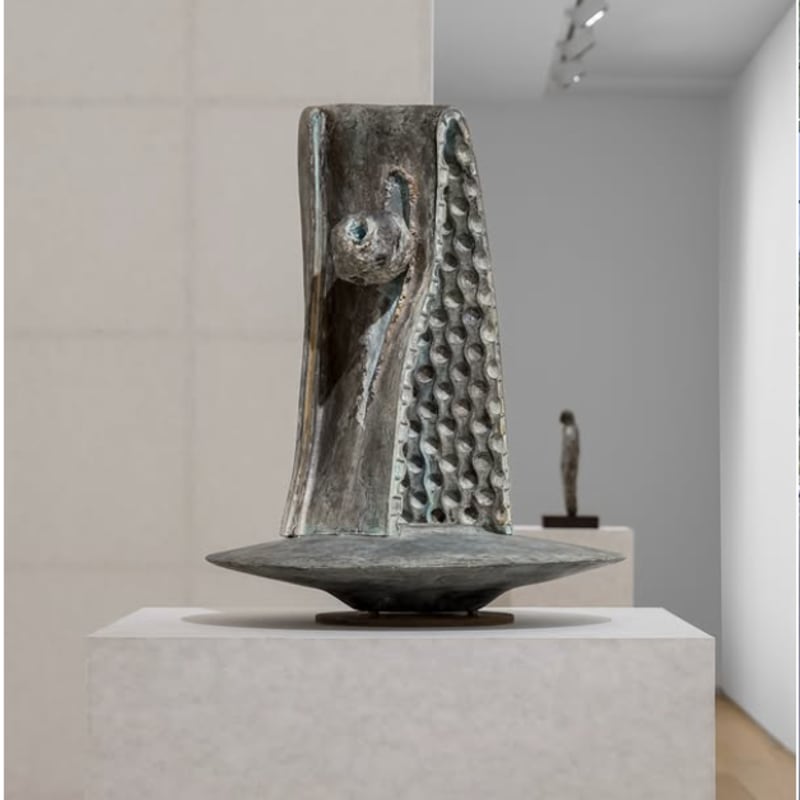

Elger Esser Irides
Overview
Esser’s latest works were developed in the garden of famous entomologist Jean-Henri Fabre in Sérignan-du-Comtat in the county of Vaucluse.
From 27 August to 31 October 2015 Galerie Thaddaeus Ropac is showing a solo exhibition with new works by photographer Elger Esser.
The exhibition comprises two series of works, in which Esser focuses on the garden of entomologist Jean-Henri Fabre (1823-1915) as well as on the motif of sunset. Claude Monet's garden in Giverny, the topic of the last exhibition at Galerie Thaddaeus Ropac in Paris (2011), is now followed by a further landscape with a Weltbild projected on to it. The leitmotiv of the exhibition is the iris: the iris as a flower, the iris of the sun, the iris of the photography.
Esser’s latest works were developed in the garden of famous entomologist Jean-Henri Fabre in Sérignan-du-Comtat in the county of Vaucluse. The scientist and author of Souvenirs Entomologiques lived there with his family for over 30 years until his death, the estate being the fulfilment of a long-cherished dream. In Souvenirs Entomologiques Fabre writes: "This is what I have been looking for, hoc erat in votis: a piece of land, no, not particularly big, but enclosed and protected from curious gazes; a piece of land, abandoned, infertile, burned by the sun but hospitable for thistles and hymenoptera. [...] It is a harmas. That is what an uncultivated, rocky area, which has been surrendered to wild thyme is called [...]." In these works, the viewer's eye immediately encounters dense vegetation. The viewer is virtually drawn into the thicket. "There is no longer any real 'sublime' in the romantic sense; rather, the sublime reveals itself in the internalisation.", says Elger Esser. It is the projection of an imaginary world into the landscape, which, in the more recent series, increasingly shifts into the photographer’s focus.
As a contrast to this, in the series of the sunsets, the viewer's eye can wander unhindered across the vast plain. This series of works is characterised by an impressionistic glowing brightness. Here Esser premières a new technique in which he prints on silver-plated sheets of copper placed on a console and leaning object-like against the wall.
Elger Esser was born in Stuttgart in 1967 and spent his childhood in Rome. In the 1990s he studied in the famous class of Bernd and Hilla Becher at the Kunstakademie/Düsseldorf, where Esser now lives and works. The classic genres of veduta and landscape are central themes in Esser's photographs. His works are characterised by largely monochromatic colouring, a preference for diffuse, uniform lighting and a constant tension between micro and macro structures. With sensitive and precise observation, Elger Esser captures the exact moment at which the character and the atmosphere of a landscape are revealed. Not by chance are Esser's photographs often associated with the (travel) literature of the late 18th and 19th centuries. In his more recent series, the resolution of the photographs increasingly assumes a painterly quality.
Extensive solo exhibitions at Kunstmuseum/Stuttgart (2009), Museum voor Moderne Kunst/Arnhem (2010), Institute of Modern Art/Nuremberg (2013) and Florida Museum of Photographic Arts/Tampa (2014), will be followed in the next two years by monographic exhibitions in the Kunsthalle/Karlsruhe (2016) and the Landesgalerie/Linz (2017). In 2016, Schirmer/Mosel publishers are bringing out a book about the heliogravure series Combray.
Esser's works are represented in numerous institutional collections including those of the Metropolitan Museum of Art/New York, Guggenheim Museum/New York, Centre Pompidou/Paris, Kunsthaus/Zurich, Stedelijk Museum/Amsterdam, Albright-Knox Art Gallery/Buffalo, Städtische Galerie im Lenbachhaus and Kunstmuseum/Stuttgart.

















































































































































































